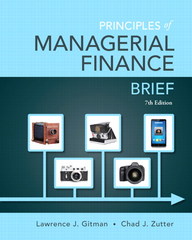Question
Now suppose that instead of having invested $25 in each asset, you originally invested $50 in Asset 1 and $50 in Asset 4(with $0 invested
Now suppose that instead of having invested $25 in each asset, you originally invested $50 in
Asset 1 and $50 in Asset 4(with $0 invested elsewhere). Thereafter, every month you sell
everything you own in assets 1 and 4, and then immediately buy again the same assets
in equal
amounts
. What is the average annual return and annual standard deviation of your whole investment?
How much will your investment be worth at the end of the sample period?
5. Now suppose that instead of investing $50 in assets 1 and 4, you
short
$100 of asset 4 (i.e., you
borrow $100 of asset 4, agreeing to return the $100 plus the return in asset 4 at the end of the month.
Note that this is, moneywise, the same as borrowing some unit, say a share, of asset 4, and agree to
return that same unit a month later.) and use those $100 plus $100 of your own money to invest in
asset 1. Thereafter, every month you sell whatever you have in asset 1, pay for your short position
in asset 4, and proceed to short asset 4 again, and invest in asset 1 again, in a 2-to-1 ratio (for every
dollar you short asset 4, you invest two dollars in asset 1). What is the average annual return and
annual standard deviation of
your net investment (i.e.,
after
youve paid for your short position)?
How much will your investment be worth at the end of the sample period?
Data is missing. Its 93 years of returns so Its and excel file.
Step by Step Solution
There are 3 Steps involved in it
Step: 1

Get Instant Access to Expert-Tailored Solutions
See step-by-step solutions with expert insights and AI powered tools for academic success
Step: 2

Step: 3

Ace Your Homework with AI
Get the answers you need in no time with our AI-driven, step-by-step assistance
Get Started


